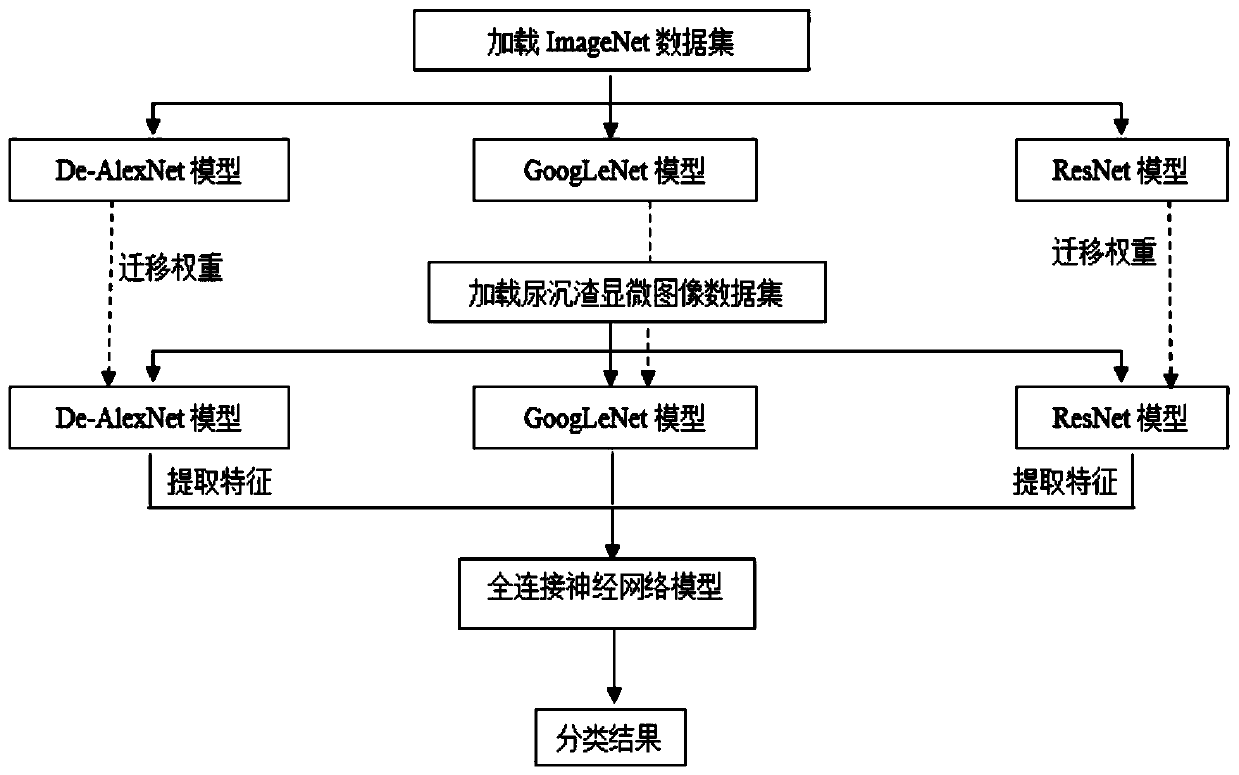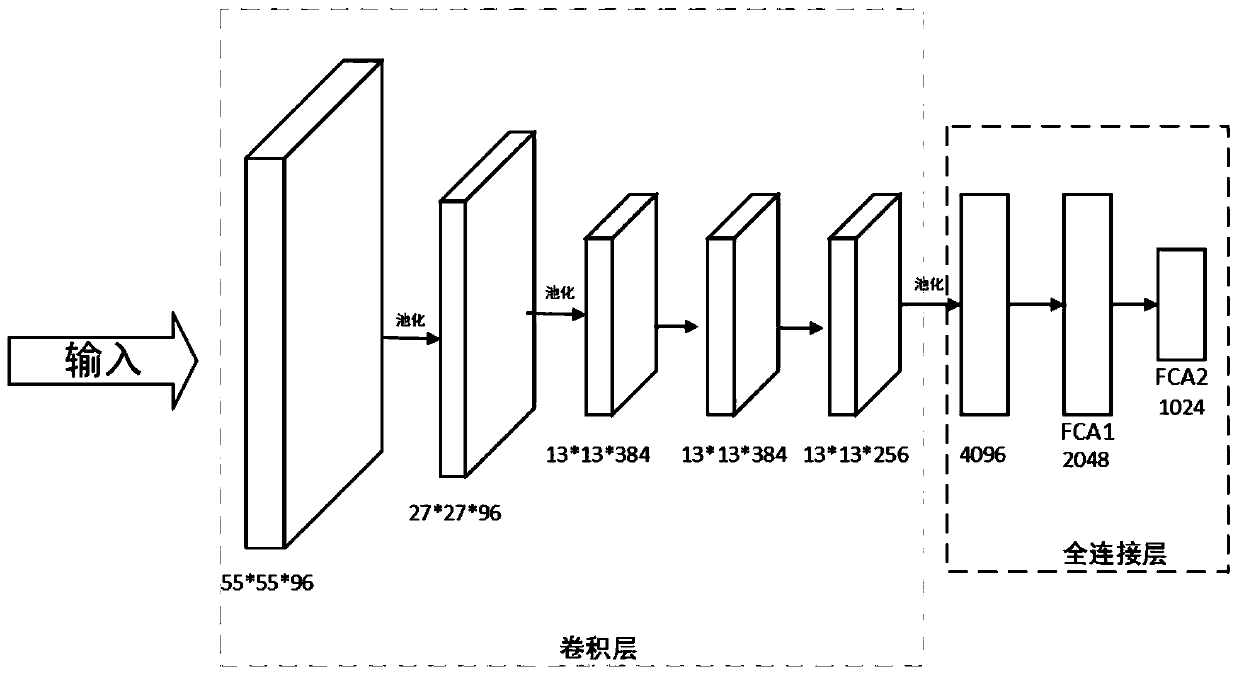A urinary sediment microscopic image visible component recognition method based on deep learning
A microscopic image and deep learning technology, applied in the field of medical microscopic image processing, can solve the problem of insufficient samples of urine sediment microscopic images, and achieve the effects of rich image features, simple operation and excellent efficiency
- Summary
- Abstract
- Description
- Claims
- Application Information
AI Technical Summary
Problems solved by technology
Method used
Image
Examples
Embodiment Construction
[0032] The specific implementation manner and working principle of the present invention will be further described in detail below in conjunction with the accompanying drawings.
[0033] This method consists of four parts: improving the AlexNet model to the De-AlexNet model, transferring the weights of the CNN model, fine-tuning the learning rate and cascading features, and integrating the features extracted by the three convolutional neural network models and designing a classifier.
[0034] The first part removes the fully connected layer of the FC7 layer of the AlexNet model with a dimension of 4096, and adds two layers of FCA1 and FCA2 layers with fully connected layers of dimensions 2048 and 1024 respectively.
[0035] In the second part, the De-AlexNet model, GoogLeNet model and ResNet model are pre-trained on the ImageNet dataset to obtain weights, and then the weights are transferred to the urine sediment microscopic image dataset to continue training.
[0036] In the ...
PUM
 Login to View More
Login to View More Abstract
Description
Claims
Application Information
 Login to View More
Login to View More - R&D
- Intellectual Property
- Life Sciences
- Materials
- Tech Scout
- Unparalleled Data Quality
- Higher Quality Content
- 60% Fewer Hallucinations
Browse by: Latest US Patents, China's latest patents, Technical Efficacy Thesaurus, Application Domain, Technology Topic, Popular Technical Reports.
© 2025 PatSnap. All rights reserved.Legal|Privacy policy|Modern Slavery Act Transparency Statement|Sitemap|About US| Contact US: help@patsnap.com



